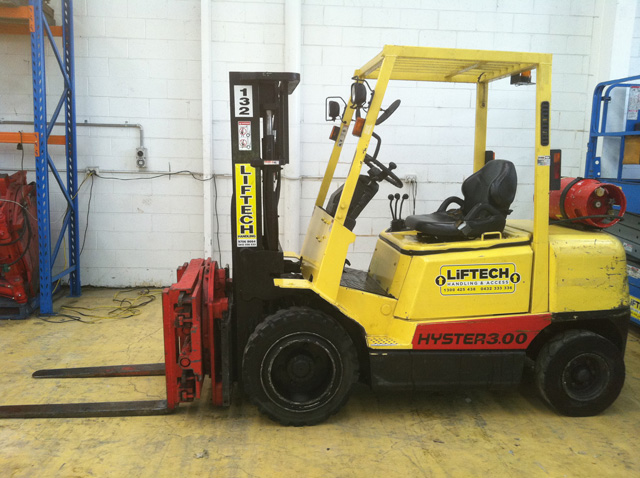There are a variety of situations that could require you to transport a forklift or a scissor lift – perhaps you need to move them between job sites, or may be you’ve recently bought them and need to get them to your location. No matter the reason, it is important that you are aware of how to transport these machines properly and safely to ensure that they arrive in one piece.
1. Preparing the Transport Vehicle
Before loading the machine, you will need to ensure that the transport vehicle is in good condition. Ensure that the wheels are chocked to prevent from rolling. If you’re loading a trailer that isn’t already attached to a truck, you will need to put a nose jack under the front of the trailer; adjust it so that it is within an inch of contacting the trailer. This will prevent the trailer from tipping forwards.
2. Load the Machine
Now you will need to drive the forklift or scissor lift onto the trailer. A forklift should always be reversed, so that the forks are pointing towards the rear of the trailer. If the forks are pointing forwards, towards the truck, they could be forced through the cabin in case of an accident, causing serious injury or even fatality. This is not an issue with other machines, as there are no forks.
3. Chocking the Machine
Centre the lift so that it is side-to-side on the trailer. In the case of a forklift, lower the forks to the ground and tilt them forwards slightly before they impact the floor. Place wooden blocks behind each of the machine’s wheels and fasten them in place using some 4 inch screws (they will go through the block into the wooden floor of the trailer). The blocks need to be firm and secure against the wheels.
4. Making the Machine Safe
Ensure that the lift’s fuel supply has been shut off. If the machine is powered by diesel or petrol, you will need to ensure that the fuel tank has been properly secured and that there is no chance that fuel will be able to slosh or splash out during transit. You should also disconnect the battery terminal, as this will help to reduce the possibility of arcing and ensure that the engine doesn’t start during transit.
5. Securing the Machine
Before setting off for your destination, you will need to ensure that the forklift or scissor lift has been properly secured to the trailer. This can be achieved using chains, nylon straps and come-along(s). They will be used to secure the machine to the edges of the trailer, ensuring that it will not move. Two chains or straps can be used to create four anchor points, one at each corner of the machine.
We hope that the instructions provided in this article have given you a thorough understanding of the best way to transport a forklift or scissor lift. Before attempting any sort of transportation, however, it is important that you have consulted the owner’s manual for the machine in question. The manufacturer may have included specific instructions on how to secure and transport their machines. If this is the case, you need to follow these instructions.





